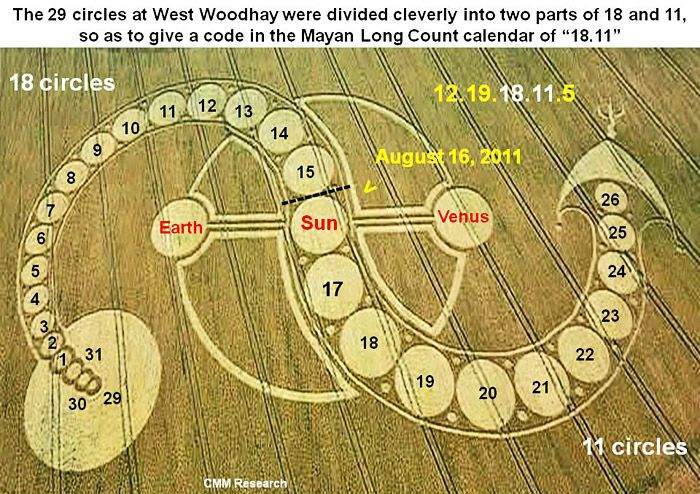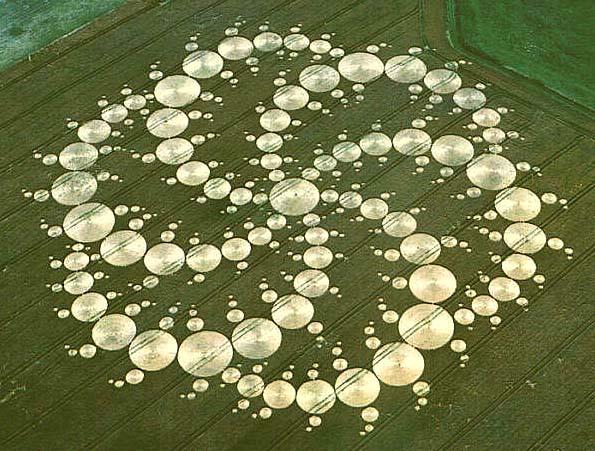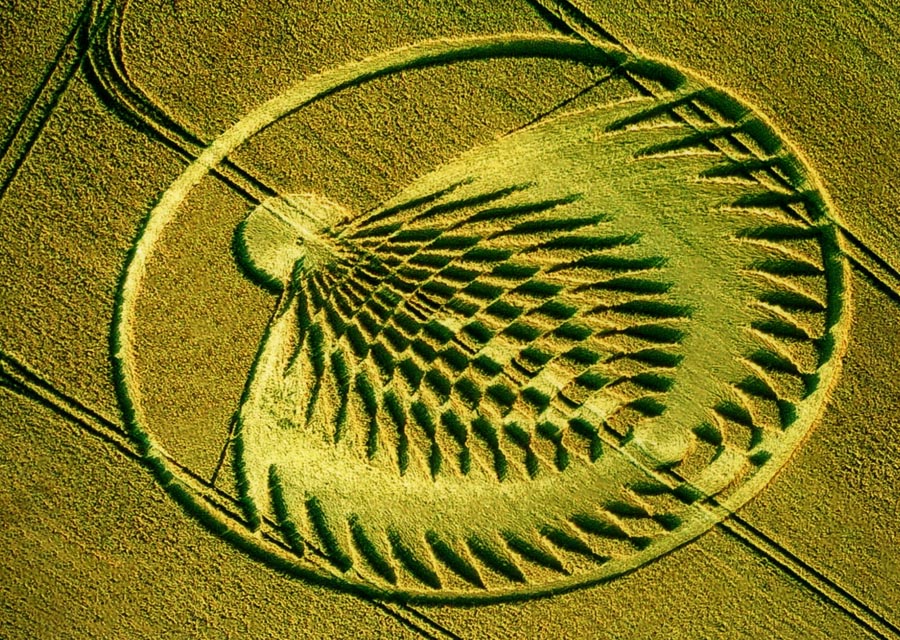Numbers of the destructive crop designs have fallen dramatically this year, with just 15 being counted in July compared to 50 the previous year.
In the past, the most ambitious crop circles have attracted tourists from around the world, sparked rumours of aliens and theories of fiendishly difficult mathematical formulas hidden in their meaning.
Most scientists now agree that crop circles are man-made.
This week one crop circle creator announced he has retired from the practice due to hay fever.
Matthew Williams, 42, who was the first person to be prosecuted for destruction of a farmers crops when creating a circle, also bemoaned falling standards as amateurs have taken to creating squares and circles – poor imitations to some of the intricate patterns made in the past.
While the first accounts of crop formations start in the 16th century, when they were attributed to fairies or the Devil, the creation of modern crop circles still remains a closely guarded secret.
According to cereologists, who study the origins of circles, creators use tools such as ropes, ladders and planks of wood to flatten out their design.

Here we attempt to demystify how crop circles are created:
1. Find a field
This is a key first step – many crop artists now seek permission of the farmer and landowner to enter the field due to the harm these designs cause to crops and so yields from a field.
The damage caused by crop circles can cost farmers up to £1,000 in lost revenue, depending the size of the area flattened.
Some farmers have begun charging visitors to look at crop circles to offset any losses they incur.
The right kind of crop also makes a difference – wheat, barley and rapeseed oils are seen as being best.
The plants need to be at the right stage of development. If they are too old and dry, they can break easily, leaving a tell tale path of the artist’s passage through the field.
Too young and they won’t bend down enough and the design will be hard to spot.
2. Plan the pattern
Some designs that have appeared are fiendishly complicated, but this makes it harder to create them.
Crop artists tend to use a map and computers to plot their circles out beforehand and some use GPS devices to help them create large patterns.
Some also use more traditional techniques such as dowsing rods to identify prime locations.
Siting a crop circle above underground streams or in magnetic fields is thought to add authenticity to the circle while also helping to baffle those who want to unravel their mystery.
3. Getting some help
Making crop circles is labour intensive so most crop circles tend to have been created by small teams of people.
The right equipment is also important – a length of tape or string to provide a guide; a garden roller can help with flattening, but a 3-6ft piece of wooden board with ropes attached to each end is the traditional choice for stalk stomping.
4. Waiting for the cover of darkness
Venturing out in broad daylight can ruin the mystery of how a crop circle appeared so they tend to be created at night, away from the prying eyes of unsuspecting locals.
Torches can attract attention, so instead the crop circle creators prefer to work by the light provided by the stars or moon after allowing time for their eyes to become accustomed to the dark.
They will also park several miles away from the intended site and walk there to further avoid suspicion.

5. Carefully does it
By entering fields on existing tractor tracks and paths, crop circle creators can help to disguise how the crop circle got there.
Sticking to hard ground also avoids leaving foot prints while careful movement through the growing plants helps to minimise signs that they were there.
Once at the location for the pattern, they try to only walk in areas where the crop will be flattened so their presence can go undetected, helping to add to the mystery.
6. Measuring out the design
Using tape or string, most crop artists will measure out the design. Some crop circle creators use surveying equipment to help ensure their shapes are perfectly geometric and to keep lines straight.
7. Flattening the crop
This is when the damage is done. Traditionally, the rope attached to the plank is looped over the shoulders and a foot is pressed onto the wood, pressing it forward and down.
This folds the stems and bends them in a regular pattern. By advancing in a shuffling gait they can bend all of the plants in the same, regular way.
The difference between the way light is reflected off the bent stems compared to the upright plants is what creates the pattern.
To make a perfect circle, one end of the plank is anchored to the ground and rotated around that point.
Other crop circles have been made using garden rollers which speeds up the process.
8. Making super natural additions
Many famous human-made crop circles feature “grapeshots” or “signatures” – smaller, disjointed circles, or raised sections inside of the main circles.
By shaping stems and unflattening portions, the crop circles take on an air of mystery and carry some artistic flare.
9. Be away by dawn
Getting caught as the sun comes up is an embarrassing situation, so most crop circle creators time their pattern creations to be finished before dawn.
Once complete, sneak they sneak out the way came in and wait for the conspiracy theories to start flying.

Originally posted 2015-07-02 16:12:50. Republished by Blog Post Promoter












